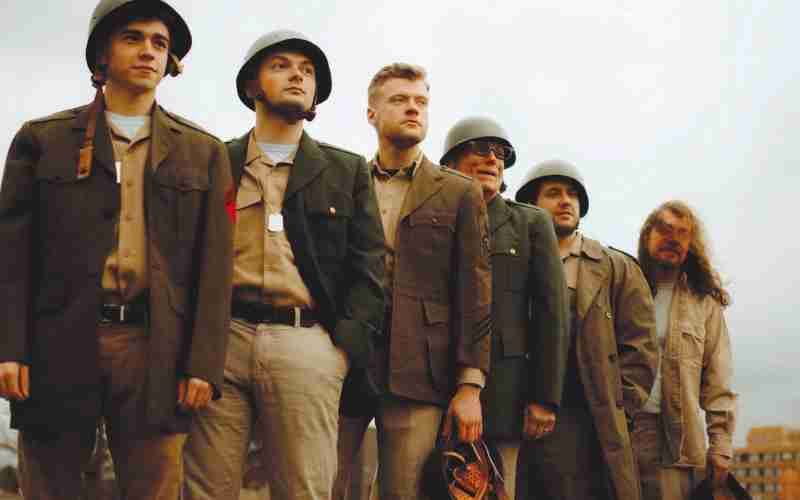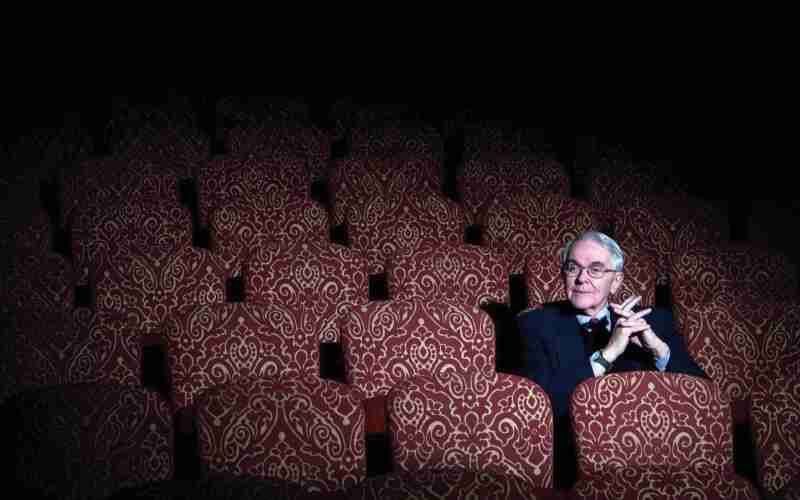Directing a time-traveling story in a small space seems like a tough task, but it’s one Alex Leavell is taking on.
Leavell has experience directing high school plays at Bellmont High School, but this month’s Slaughterhouse-Five show at RKF Studios, 2446 Lake Ave., will be his first play in the Fort Wayne community.
Based on the antiwar novel by Kurt Vonnegut, there will be five shows from Friday, April 15, to Sunday, April 24.
“It is a challenge, but I’ve always liked the weird stuff, and Vonnegut has always just been great,” Leavell said. “This was the first book that I loved in high school. So, when we got this space built last summer, ideas just started kicking about what we could do to take advantage of it. It gave us an opportunity to do our passion projects.”
Benefactor Gives Boost
The show will be a Indiana Musical Theatre Foundation production, which opened its season in February with the two-night concert Celebration of Sam Cooke, which was also directed by Leavell.
IMTF’s roots began in 1999 with the formation of the Fort Wayne Summer Music Theatre by Kirby Volz and Jeanette Walsh. Giving high school students a way to enjoy theater throughout the summer, the program got a boost in 2019 when Leslie Koehlinger Russ became a part of the organization, helping create the nonprofit IMTF.
“It allows us to open up for more things,” Leavell said. “It’s not just our summer shows, because now we have the space and the funds.”
Technology Drives Story
Although the space at RKF Studios is limited, as well as a challenge to find, Leavell is excited to bring Slaughterhouse-Five to the venue.
“We have five playing spaces, and they’re on three separate walls,” he said. “So, we have Dresden on one wall, the slaughterhouse on another wall, which is also being used as the Tralfamadorian spaceship. A lot of this depends on light and sound. It’s a very light- and sound-driven show.”
Helping bring the story of Billy Pilgrim becoming “unstuck in time” between his youth, his time as a POW during the Allied bombing of Dresden, and as his post-war life is Jacob Zeigler, who also does lighting at The Clyde Theatre.
“So, we have a total of five TVs,” Zeigler said. “Some will look like pieces of art that transform as the scenes change. Three on our main wall will transport you to different spaces, so you can feel like you’re in an airplane in one scene, you’re on a hillside in another scene, and then our last one will be in the rubble of Dresden. We’ll show the fire, we’ll show the rubble and smoldering buildings, and as the bodies start to stack, we’ll see those visuals as well.”
With action taking place on three sides of the audience, Leavell said the goal is to get attendees to feel “disoriented,” which can be tough in a space with a capacity of 135 people.
“We’re using technology the best we can, because this is a studio, it’s not a theater,” he said. “So, we have to do the best we can to make it a theater. And make it as immersive as possible, because I think that’s important to the show.”
Playing the Role
Of even more importance to the show is actors. And as one of the newer theaters in town, filling out a cast of 17 was a bit of a challenge.
“For our first play, it was hard,” Leavell admitted. “Unless you’re an established theater that does plays all the time, it’s hard. Thankfully, I know a lot of people who love to work with me, so I had some buddies jump in. I’ve been lucky with the cast I’ve got.”
Among the cast is 21-year-old Dustin Hornbeak, who is playing young Billy Pilgrim.
“He was perfect for Billy Pilgrim,” Leavell said. “Billy’s very gentle and naïve, and (Hornbeak) has that.”
Hornbeak got involved with the show after hearing about it while working alongside Leavell’s wife, Emma Beauchamp-Leavell, on the Civic Theatre’s recent production of Seussical the Musical.
“We did the readings, and it was fun,” Hornbeak said.
Although he had not read the book, the unconventional storytelling drew him in.
“You could take the story in chronological order, but it doesn’t do that,” Hornbeak said. “It breaks it up and moves it all around.”
And if some in the audience have trouble keeping up, as Vonnegut would say, “So it goes.”





